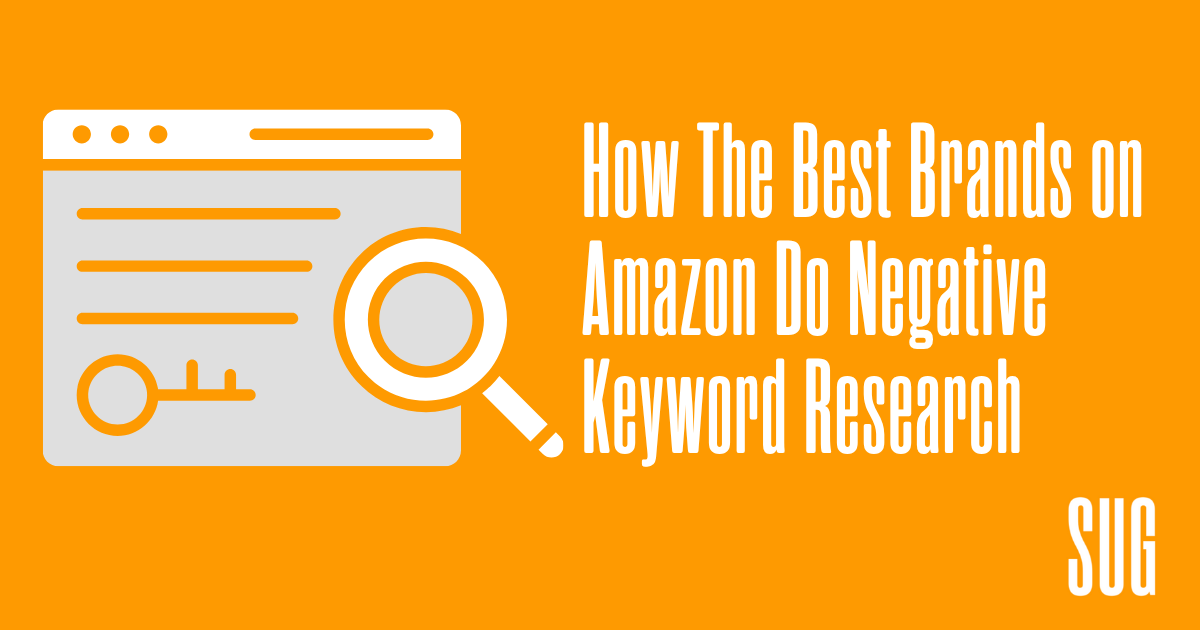How the Best Brands on Amazon do Negative Keyword Research

Negative keywords are the opposite of keyword bidding.
This keyword targeting strategy allows you to make a list of keywords you do not want to advertise on.
This is an opportunity to reduce your wasted ad spend and spend your ad budget wisely on better converting terms.
Want help finding the right negative keywords for your campaigns + brands? Find out more below!
Types of Negative Keywords
There are two types of negative keywords: negative phrase match and negative exact match
Negative Phrase Match looks for a string of keywords that match the sequence of your chosen keyword. Similar misspellings can be included in this – such as ‘caffeine pre-workout’ vs ‘caffeinated pre-workout’. These keyword strings are limited to 4 words.
Negative Exact Match are very similar to exact match keywords, where you’re negating a very specific search term.
How to Include Negative Keywords on Amazon
You can add negative keywords at two levels: by campaign and ad group
These can be added to a list in Seller Central underneath the ‘Advertising’ tab, and then choosing the specific campaign.
Click the ‘Negative Keywords’ tab and you can create a list of your negative keywords for this campaign.
Negative keywords can only be exact and phrase match types – broad match types cannot be included.
At SUG, we recommend starting with a shorter list of negative keywords to run a test campaign. This can help test the effectiveness without wasting your advertising budget.
How to Find the Right Negative Keywords on Amazon
The best way to find negative keywords is done similarly to how you already do regular keyword research - with your keyword research tools and Amazon’s Brand Analytics site.
Start by pulling a search term report to understand the effectiveness of your current keywords.
The negative keywords you include should be determined by:
Your campaign structure - auto, research, or performance
The price and category of your items
Understanding the clickthrough thresholds is key to determining which negative keywords to include in your campaigns. Depending on the price point of your products, keywords with a lower clickthrough threshold should be negated.
Doing a category analysis during this research would also be beneficial. This will help you understand your positioning vs your competitors.
For example, if your price point is significantly higher than the average price point of your competition – this is something to consider when choosing your negative keywords. You may want to negate many of the keywords your competitors are using, as your offering is now very different from theirs.
Tips + Tricks for Finding Good Negative Keywords
- Do an off Amazon analysis of potential negative keywords on other sites, such as Google Shopping to see which keywords are being utilized by your competition
- Find the opposite of terms you’re targeting to ensure you’re not appearing under terms unrelated to your offering. For example, if you sell caffeine drinks or supplements, you will not want to appear under keywords like ‘non-caffeinated’ or ‘non-stim’.
- Use your search term reports to find under performing keywords. While these keywords fit your product description, you shouldn’t be spending on keywords that aren’t getting clicks or sales. Filter your reports to find low clickthrough and low conversion terms
- Understand the customer journey through your keywords - if a keyword has a high number of clicks but low conversion, this should also be included in your negative keyword list
The Benefits of Using Negative Keywords
There are many benefits to including a negative keyword strategy into your next campaign, including:
Reduce wasted ad spend
Help move your campaigns from broad to exact match types
Improve your conversion rate
Ensure your campaigns aren’t competing against each other
Negative Keyword Research FAQs
Where Can You Add Negative Amazon Keywords?
Negative keywords can be added to your campaigns in Seller Central under a specific campaign, there you can add your list of exact and phrase match negative keywords.
Should I Add My Brand Name as a Negative Keyword?
Unless your brand name is an extremely low converting keyword, we would recommend including your brand name in your keyword strategies.
How Much Time Should I Spend on Negative Keywords?
You should spend some time using a keyword research tool to understand which negative keywords would be beneficial to include in your campaigns. You should start with a test campaign to see how excluding these keywords affects your campaigns before spending a larger ad spend on these campaigns.




